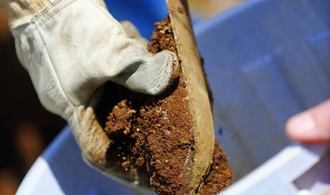Soil: a delicate resource which needs to be carefully managed
Written by Modified on the
Erosion, compaction, decline in organic matter content, chemical pollution and salinisation: Soils are subjected to different types of degradation. Agricultural intensification is the main culprit: while the amount of cultivated land has remained constant over the past twenty years, their use has become increasingly intensive in order to increase yields. This intensification depletes the soil and has become a threat to productivity. So, how can we increase the availability and efficiency of farmland, ensure a quality production and maintain soil over the long term? This issue is of worldwide concern.
Soil structure is indeed crucial in plant development, and therefore in agriculture, but also in processes important for human activities such as storage of drinking water and raw materials. Good soil acts as a "carbon sink": it stores carbon in organic matter, which improves its fertility and reduces the amount of atmospheric carbon dioxide.
This organic matter consists of both dead and living organisms. The flora and fauna in the soil represents over 80% of terrestrial animal biodiversity, mainly microorganisms (up to 10 billion people per gram of soil ). These species play an essential role in maintaining soil quality. Bacteria decontaminate the soil and water. As organic matter decomposes, it creates air pockets which facilitates the transfer of water and gases by earthworms. Thus, soil organisms support the quality and abundance of plant production by renewing its structure.
The choice of prudent agricultural systems, such as rotation and crop diversification, biological control, little or no tillage and application of organic matter, is essential for efficient use and soil conservation.


